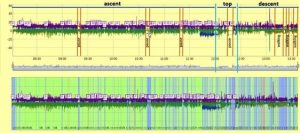The best of all universes? Science takes a look at Star Trek
Scientists representing a variety of specialist fields have come together at Alpen-Adria-Universität to explore the Star Trek phenomenon through the lens of their respective discipline. The results included a lecture series with lecture theatres consistently filled to capacity. The edited volume with the title “Set Phasers to Teach! Star Trek in Research and Teaching” was recently published, offering insights into the wealth of perspectives and delivering opportunities for thought-provoking impulses, even for die-hard Trekkies. We joined the co-editors Martin Gabriel (Department of History) and Wilfried Elmenreich (Department of Networked and Embedded System) for an interview. Former AAU staff members Stefan Rabitsch and John NA Brown were subsequently invited to add their statements.












